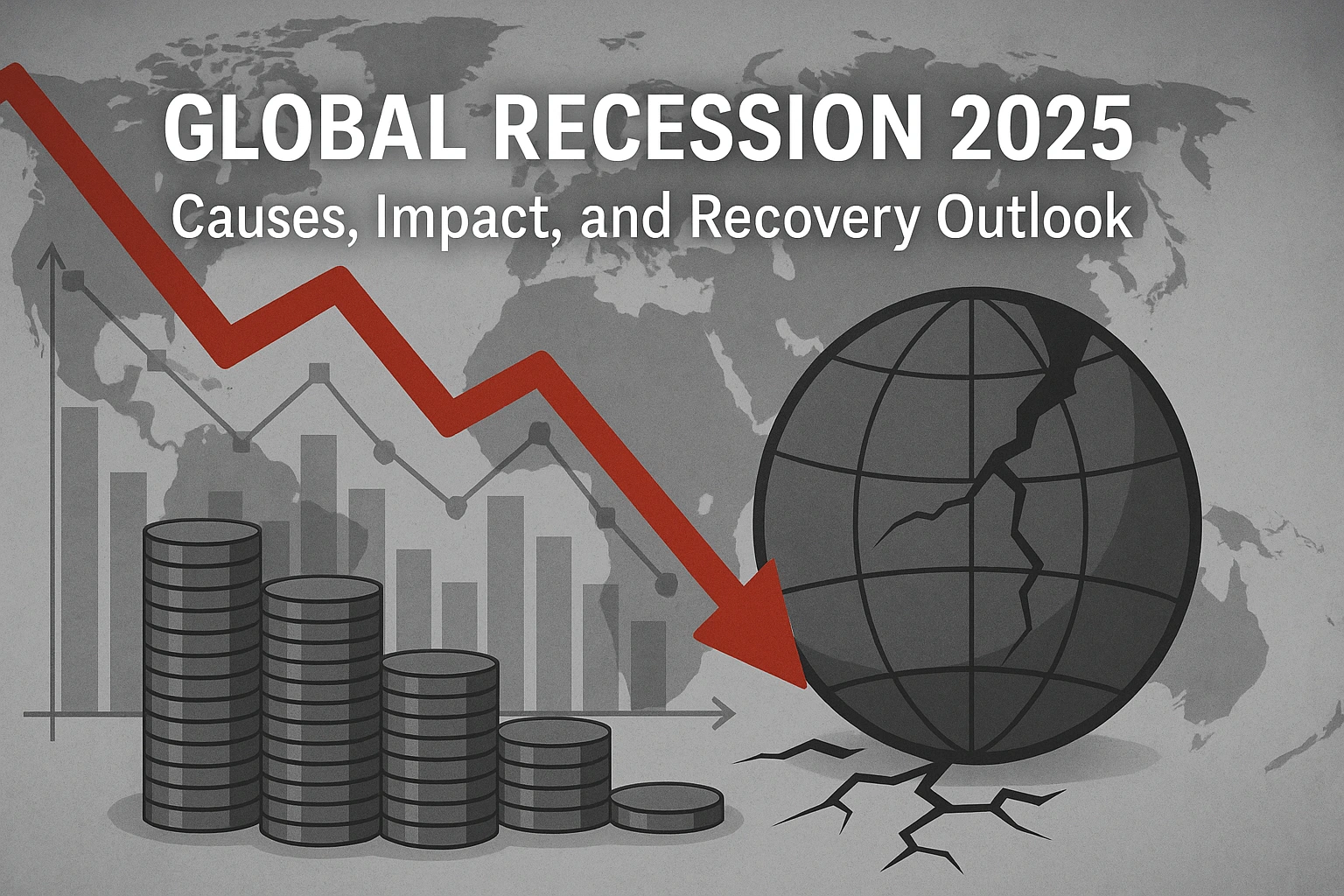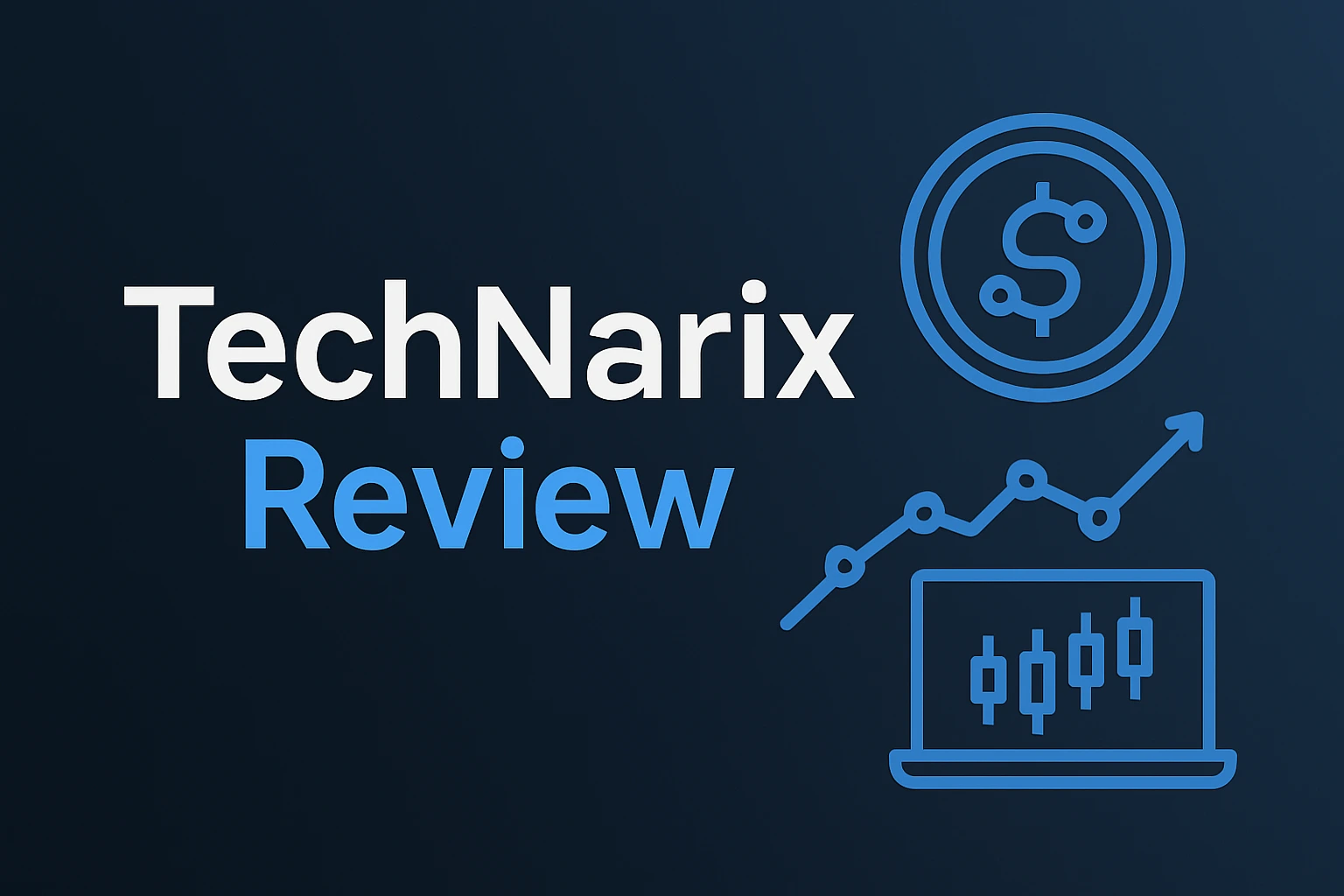Explore the root causes of the global recession in 2025, the sectors most affected, and whether coordinated economic action can prevent long-term collapse. Detailed analysis, data, and expert insights.
In 2025, the term “global recession” is no longer speculative – it’s headline news. From inflation to geopolitical instability, economies worldwide are grappling with a complex web of interlinked shocks. But can it be reversed? Or are we headed into a prolonged economic ice age?
What Defines a Global Recession?
IMF and World Bank Criteria
A global recession typically means:
- Per-capita global GDP contracts for two consecutive quarters
- Multiple major economies show negative growth simultaneously
- Global trade, investment, and employment decline together
According to the IMF (Q1 2025):
- Global growth forecast: 1.2% (down from 2.8% in 2023)
- 5 of the G7 economies are already in technical recession
- Global trade volume down 6.3% YoY
What’s Fueling the Downturn?
1. Inflation and Interest Rate Fatigue
- 2021–2024: Inflationary spiral post-COVID, supply chain shocks, and war premiums
- 2025: Central banks now face a stagflation dilemma – inflation persists despite low growth
- Example:
- U.S. Fed rate: 5.25%
- ECB rate: 4.5%
- India’s repo: 6.15%
- U.S. Fed rate: 5.25%
“Monetary tightening fixed inflation, but broke demand.” – Bloomberg Economics, April 2025
2. Geopolitical Tensions & War Spending
- Ongoing Conflicts: Eastern Europe, South China Sea, Middle East unrest
- Military Budgets: Diverted funds from healthcare, education, and infrastructure
- Sanctions and Trade Barriers: Disrupt global supply chains and capital flows
3. Technological Disruption Without Employment Absorption
- AI adoption accelerates, but doesn’t create enough jobs to offset losses
- Remote work plateau: Many tech layoffs and automation-driven redundancies
- Uneven productivity gains: Advanced economies grow faster than emerging ones
4. Energy Shocks and Resource Volatility
- Oil price instability: Ranging from $72–$130/barrel in the past 12 months
- Supply gaps: Green transition not fast enough to replace fossil fuels
- Example: Rolling blackouts in South Asia due to energy rationing
The Hardest-Hit Sectors (2024–2025)
| Sector | Status (Q1 2025) | Cause |
| Manufacturing | -8.1% YoY | Input shortages, low demand |
| Tech & SaaS | -5.7% YoY | Valuation collapse, layoffs |
| Real Estate | -6.2% YoY | Rate hikes, credit squeeze |
| Consumer Retail | -9.4% YoY | Inflation fatigue, reduced discretionary spend |
| Logistics & Trade | -12.3% YoY | Trade disruptions, fuel price fluctuations |
“In 2025, no sector is truly safe. Even healthcare is seeing margin erosion due to inflationary supply contracts.” – Deloitte Global Outlook
Financial Market Reaction
Stock Indices
- S&P 500: Down 18% YTD
- EuroStoxx 50: Down 14%
- Nifty 50 (India): Down 9%, but more resilient due to domestic consumption
Bonds and Fixed Income
- Government Bonds: Yields high, but risk of defaults in emerging markets
- Corporate Debt: Junk bond spread at 5-year high
Crypto Markets
- Bitcoin: $42,000 (volatile but seen as “digital gold”)
- Ethereum: $2,150
- Stablecoins: Surge in demand for USDT/USDC as safe havens
Can the Recession Be Reversed?
Here’s where the debate begins. Analysts split into two camps:
Camp 1 – “Yes, With Action”
- Coordinated global stimulus needed (G20-level response)
- Monetary easing where inflation is under control
- Investment in productivity + clean energy to boost medium-term growth
Camp 2 – “No, It’s Systemic”
- Debt overhang too large to stimulate out of recession
- Demographics + automation reduce long-term consumption
- Geopolitical fragmentation means cooperation is unlikely
Expert Insight
“Unlike 2008 or 2020, this recession is multi-layered. We’re fighting inflation, automation shocks, war, and trust collapse – all at once.”
– Mariana Kovach, Senior Economist, WEF
The world has been through economic turmoil before – 1929, 2008, 2020 – but 2025 presents a novel challenge: a recession born not from a single shock, but from a complex convergence of crises. Can it still be reversed? Some governments think so – and are betting big on green tech, digital finance, and creative fiscal policies.
The Tools on the Table – Global Institutions React
1. Central Banks: Between a Rock and Stagflation
- Many banks tightened too fast in 2023–2024, trying to tame inflation
- In 2025, they’re under pressure to pivot to stimulus without reigniting price surges
- Policy mix shifting:
- U.S. Fed considering quantitative easing 3.5
- ECB launching Green Bond Buyback Program
- Bank of Japan maintaining ultra-low rates, but tightening food import policies
- U.S. Fed considering quantitative easing 3.5
2. G20 & IMF Coordinated Stimulus Proposal (May 2025)
A global plan led by the IMF aims to inject $2.5 trillion over two years via:
- Infrastructure modernization (digital + green)
- Direct cash transfers to poorest populations
- Support for local currencies & food subsidies in vulnerable economies
- CBDC intergovernmental framework to reduce remittance costs and FX volatility
Projected global GDP lift: +1.1% by Q4 2026 if implemented fully
Lessons from Countries Betting on Innovation
India – “Digital Rails, Rural Roots”
- Launched rural UPI expansion, providing QR-based wallets to 400 million
- Heavy investment in agritech + solar microgrids
- Result (Q1 2025): GDP contraction -0.6% (vs. -1.5% G20 avg.)
“India’s digital financial stack proved more recession-proof than its industrial peers.” – McKinsey India, 2025
Brazil – “Green Shock Therapy”
- 2023: Switched subsidies from fossil fuels to biofuel and green hydrogen
- Partnered with Germany on climate bond infrastructure fund
- Mass retraining in forestry tech & environmental services
Employment rate up 2.3% YoY in 2025 despite global downturn
Germany – “Industrial Repivot”
- Focused on de-risking from China while maintaining high-tech exports
- Reinvested in semiconductor fabrication, EV battery plants
- Launched a citizen dividend trial (UBI via Digital Euro pilot)
Recession still present (-1.2% GDP), but consumer confidence remains stable
Foundational Pillars of Recovery in 2025
1. Green Infrastructure
- $870B committed globally in 2025 to renewable energy, clean transit
- Long-term ROI, but near-term job creation in manufacturing, installation, logistics
- Digital twin cities and circular economy zones growing in Asia and the EU
2. Financial Inclusion via Digital Finance
- CBDCs + mobile banking reaching unbanked populations
- Stablecoin remittances cutting fees by 80%
- Decentralized ID systems improving credit access in Africa & Southeast Asia
3. Reshaping Global Supply Chains
- Push for “friend-shoring” and regional trade pacts
- Less reliance on fragile sea lanes (e.g. Red Sea, Taiwan Strait)
- Trade corridors like India–Middle East–Europe Economic Corridor (IMEC) gaining momentum
What Not to Do – Mistakes from Past Crises
| Crisis Year | Mistake | Consequence |
| 2008 | Over-reliance on QE | Asset bubbles, inequality surge |
| 2020 | Untargeted stimulus | Record corporate buybacks, inflation |
| 2023 | Rapid global tightening | Liquidity crises in emerging markets |
“You can’t solve structural decay with band-aids. And that’s what most 2008-style stimulus was.” – Nouriel Roubini, Davos 2025
Policy Quote Wall
“Growth without resilience is a trap. We’re investing in resilience now.”
– Christine Lagarde, ECB
“We cannot carbon-burn our way out of this recession. Clean energy is the new Marshall Plan.”
– Luiz I. da Silva, Brazil President
“Digitization and trust are the twin engines of 21st-century recovery.”
– Rajeev Kumar, Indian Ministry of IT & Finance
The question “Can we stop the recession?” now evolves into “How will we emerge from it – and who will survive the shift?” In this final section, we’ll explore possible economic recovery shapes, the role of AI and automation, strategies for individuals and SMEs, and what the global economy might look like by 2026 and beyond.
Economic Recovery Models – Which Curve Are We On?
1. U-Shaped Recovery
- Definition: Long period of stagnation followed by gradual return to growth
- Trigger: Coordinated investment + innovation + global cooperation
- Likelihood (OECD): 38%
“If fiscal policy holds and green innovation scales, we may emerge slowly but steadily.” – World Bank Global Forecast, June 2025
2. L-Shaped Recovery
- Definition: Sharp decline with no near-term rebound
- Trigger: Policy fragmentation, debt overhang, geopolitical risk
- Impact: Persistent unemployment, falling wages, prolonged credit freezes
- Likelihood: 27%
3. W-Shaped Recovery
- Definition: A false rebound followed by a second dip
- Trigger: Premature stimulus withdrawal or new global shocks
- Examples: Supply chain relapse, food crisis, renewed military escalation
- Likelihood: 20%
4. K-Shaped Recovery
- Definition: Economic bifurcation – elites gain, lower classes lose
- Trigger: Uneven tech access, regressive tax policy, privatized stimulus
- Symptoms: Booming asset markets, but rising food insecurity and homelessness
- Likelihood: 15% (but rising in unequal economies)
AI, Automation, and the Post-Recession Workforce
1. AI Boom in a Recession?
Paradoxically, recessions often accelerate automation as firms seek efficiency.
- Sectors most impacted:
- Finance (robo-advisors, AI compliance)
- Retail (automated logistics and fulfillment)
- Manufacturing (robotics + digital twins)
- Legal & HR (contract parsing, AI screening)
- Finance (robo-advisors, AI compliance)
“AI is recession-proof for companies, but not for workers.” – MIT Future of Work Report, 2025
2. Human Work Reinvented
- Rise of AI-assisted jobs rather than AI-replaced roles
- Increased demand for digital therapists, prompt engineers, AI ethics consultants
- Government-led retraining programs in South Korea, Germany, and Canada
- Platform cooperatives emerging as gig workers unionize around digital tools
Survival Strategies for Citizens and SMEs
For Individuals:
- Diversify income: Side gigs, micro-investments, digital asset literacy
- Reduce high-interest debt: Credit tightening may worsen in 2026
- Leverage government tools: CBDC-based UBI, energy subsidies, housing credits
- Focus on resilience industries: Cybersecurity, green energy, digital education
For Small and Medium Enterprises (SMEs):
- Digitize core operations: E-commerce, cloud finance, remote teams
- Access public funding: Green transformation grants, SME stabilization loans
- Build local supply chains: Reduce foreign dependency and logistic shocks
- Partner with fintechs: Integrate CBDC payment flows, smart contract billing
| Strategy | Benefits | Risk Level |
| AI Integration | Boosts productivity, lowers cost | Medium |
| Regional Diversification | Spreads market risk | Medium |
| Sustainable Practices | Access to ESG funding | Low |
| DeFi Tools for Finance | Flexibility + low fees | High |
What Could the Post-2025 World Look Like?
Scenario A – Coordinated Comeback (Best Case)
- Global debt restructuring
- Energy transition accelerated
- Universal basic income via CBDCs
- Net-zero jobs replace fossil fuel dependency
- Global GDP resumes 3.5% growth in 2027
Scenario B – Multipolar Disorder (Likely Case)
- Continued fragmentation
- Competing monetary zones: Digital Dollar vs e-CNY
- Middle-income nations suffer most
- Innovation clusters form: US–EU–India vs. China–Russia–Gulf
- GDP growth volatile, inequality rises
Scenario C – Recession Becomes the Norm (Worst Case)
- Governments delay transformation
- Wealth concentration grows unchecked
- Ecosystem degradation accelerates
- Social unrest, financial instability, “shadow economies” rise
- Global GDP stagnates <1.2% for next decade
Final Assessment: Can It Be Stopped?
A recession is never purely economic – it’s a political, technological, and human challenge. Stopping it requires:
- Coordination across borders
- Inclusive innovation
- Trust-based governance
- Adaptation by citizens
“We cannot go back to normal – because normal was the problem.”
– UN Sustainable Economics Report, 2025
- The recession of 2025 is multi-causal and global – no quick fix
- Smart policy, green economics, and digital inclusion offer real hope
- Adaptation – not preservation – is the path forward
- Those who retool, retrain, and reinvest will lead the next decade




